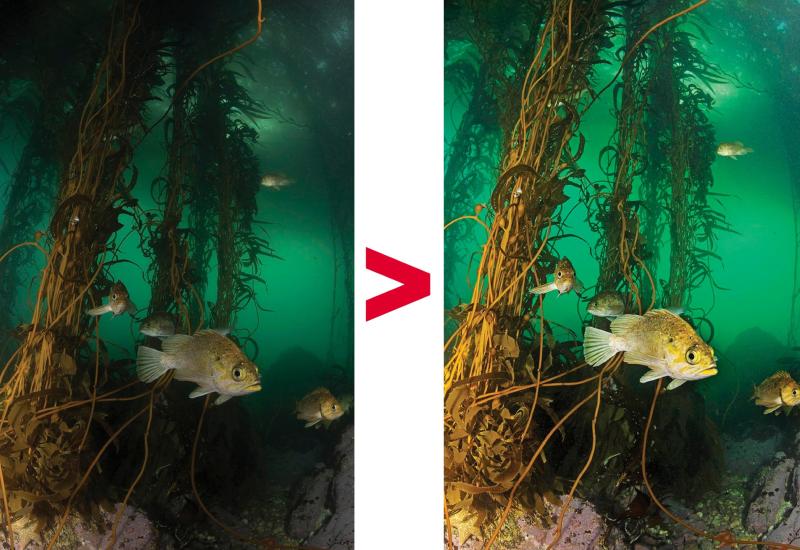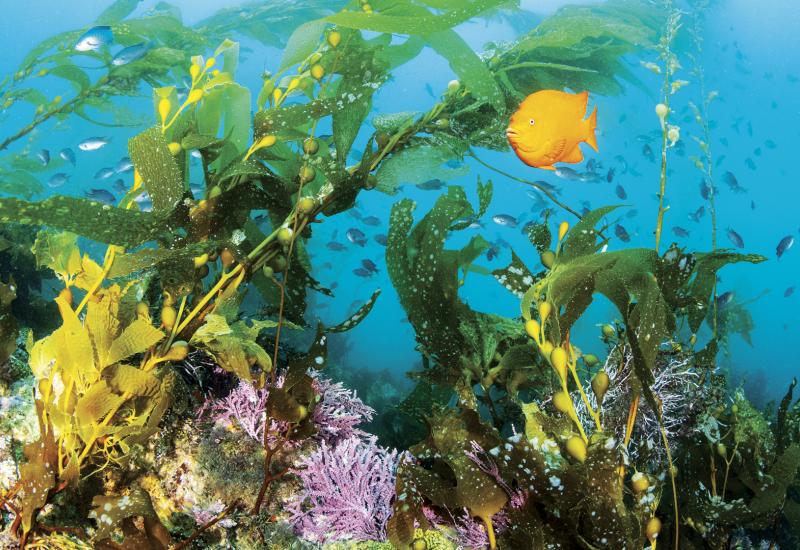Video: Swimming With The Giants of Baja

Backscatter Underwater Video & PhotoBackscatter Underwater Video & Photo
BACKSCATTER Imaging + Interviews with the Pros Featuring Erick Higuera
INTERVIEW Q/A:
1) “Baja” is a beautiful short film. What inspired you to make this edit?
Well, I moved to La Paz in the Baja California Peninsula in 1997 and back then there used to be hundreds of hammerhead sharks at the famous dive site El Bajo and Giant Mantas at La Reina. It was almost a guarantee to see these animals at these sites every summer. With time I started noticing the populations began to drastically drop over a period of just 10 years. The last time I saw Giant Mantas at La Reina was in 2002 and they haven’t been seen there since. Currently if you find a school of 30 - 40 hammerhead sharks at El Bajo, you had a very lucky day! The locals weren’t aware of what was happening with these populations. One day during a whale shark season, I was walking on the waterfront of La Paz with my fins, mask and snorkel trying to get in the water to see some of the whale sharks and people that walked by asked me what I was doing, when I explained I was shocked to realize that they did not even know there were whale sharks in their front yard! In that moment I had the inspiration of showing the locals, through a short film, the marine life that still calls the oceans surrounding the Baja peninsula home. My intention was to help educate people and raise awareness of the situation; you can’t protect what you don’t have; save what’s worth being saved.
2) You’re a marine biologist and captured amazing animal behavior. What are your tips for new divers wanting to get close to these animals?
First, observe the animals, try to figure out what they’re doing in that moment, pay attention to their behavior and respect their space, remember you are in their home. Remain calm while you wait for the action and always expect the unexpected. Open water environments are always full of surprises. Wait patiently until they get used to your presence. Most animals will approach you or eventually come closer to check you out; if it happens that you approach them instead, do so carefully and in a calm manner, they will probably accept you. If they come too close, make sure that you are with somebody that swims slower than you! (Just kidding!)
3) The human and animal interactions with mantas in Socorro is unlike anything in the world. Why are mantas so friendly in Socorro?
The main reason why the mantas in Socorro are so friendly is because they love the bubbles divers exhale, it's like a spa bath under their bellies, like getting a tickle stimulation. The Mantas are very social animals and have personalities, they want to figure out how to interact and play with you, once they figure it out, they hang around with you for hours, however you also have to give them something to keep them busy. The more bubbles you blow, the longer they stay around and keep swimming over your head, experiencing this interaction is incredibly fantastic. If you are swimming underneath a manta while you are giving her bubbles and suddenly you stop, she is also going to stop, look at you and turn back to you for more bubbles.
4) What is your primary camera, housing, and lens?
I shoot a Canon EOS 5D MKIII, Nauticam Housing with a Zen Glass Dome Port, Sigma 15mm Fisheye Lens and Canon 16-35 mm Lens. The video quality of Canon 5DMKIII is incredible, perfect custom white balance if adjusted correctly, I can shoot video underwater with a high ISO without recording any noise. To shoot Mantas with the 15 Sigma Fisheye is the best choice. I really like the video resolution and the colors that Canon delivers when shooting video, besides shooting stills the results are also great. I’m looking forward to upgrade to a camera that shoots 4K and hopefully the new Canon 5DMKIV could have 4K as its new feature.
5 ) Working in open water is different than shooting turtles on a reef. Please share a few shooting tips for photographers / videographers new to the open water environment?
• Make sure you have adjusted already the desired settings for the shots you look for, either photos or video.
• Clean the dome port of any bubbles.
• If shooting video, make sure you shoot with at least f/8 or a larger number if needed considering to always keep the exposure metering at -2/3 or at least -1/3 to get a perfect exposed shot.
• If shooting stills, don’t forget to press the shutter button half way down to focus before taking the shot.
• If shooting video, use external arms or tripod legs to shoot steady when video shooting with DSLR cameras.
• Shooting in open water environments sometimes gives the sensation to some people of “no-bottom”, don’t let that feeling of the deep blue overwhelm you and cause you to make poor decisions. It’s just a feeling produced by not seeing the bottom, nothing else.
ABOUT ERICK HIGUERA:

Courtesy Erick HigueraBackscatter Pro Erick Higuera
I was born and raised in the south central part of Mexico, and I've always had a deep passion for the ocean and all of its inhabitants. In 1997 I moved to Baja California Peninsula, Mexico, where I earned a college degree in Marine Biology, while also obtaining scuba instructor ratings with SSI, TDI and PADI. Since then I've acquired many years of experience diving and exploring the waters of the Sea of Cortez, Guadalupe Island, the Revillagigedo Islands (better known as Socorro Islands) and the Mexican Pacific, filming and photographing their sea creatures. I've also been for a long time a diving instructor and a crewmember on board the luxury live-aboard dive vessel Solmar V and part of the Great White Adventures Team and Shark Film Crew. Since 2006 I’ve been conducting research on photo-identification, abundance estimate, site fidelity, and movement patterns of the Pacific Giant Mantas (Manta birostris) in the Revillagigedo’s Archipelago, with the main objective to support the effective protection of the Archipelago.
To lean more about Erick, please see www.erickhiguera.com
- Support these photo tips by purchasing your underwater photography equipment at Backscatter Underwater Photo & Video.

Courtesy Backscatter Underwater Video & PhotoBackscatter Underwater Video & Photo










